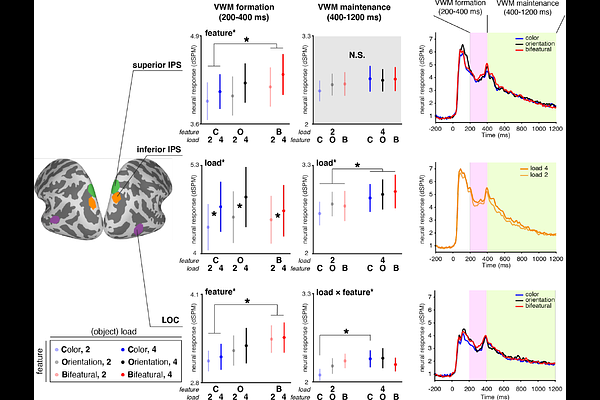Features fade, pointers persist: dissociable parietal mechanisms in visual working memory formation and maintenance

Features fade, pointers persist: dissociable parietal mechanisms in visual working memory formation and maintenance
Yu, X.; Lau, E.
AbstractAn emerging body of work has adopted the theoretical construct of pointers: an object is mentally represented by a content-free pointer binding the corresponding features together. Indeed, fMRI studies have highlighted dissociable parietal regions sensitive to pointer and feature load respectively. Specifically, while the superior IPS (intraparietal sulcus) is sensitive to feature load, inferior IPS is only sensitive to the number of pointers - i.e., the number of objects. However, the spatiotemporal dynamics remain unclear, and therefore it is unknown whether these effects reflect visual working memory (VWM) formation, maintenance, or both, especially given limited temporal resolution of fMRI. In our current MEG (magnetoencephalography) study, participants memorized visual arrays with different numbers of objects (object/pointer load: two, four), as well as different features and feature-per-object (color, orientation, bifeatural) in a VWM task. We observed a dissociation between inferior and superior IPS in the temporal dynamics of feature-sensitive and pointer-sensitive responses. While pointer-sensitive signals persisted across VWM formation and maintenance in inferior IPS, feature-sensitivity was only transiently manifested during VWM formation in superior IPS. This spatiotemporal dissociation may reflect a representational architecture optimized for efficiency, reducing the need for sustained neural activity to maintain features once they are bound to pointers. In revealing the spatiotemporal profile of pointer and feature representations, our results provide novel evidence on how pointers underlie energy-efficient neural representations in VWM.